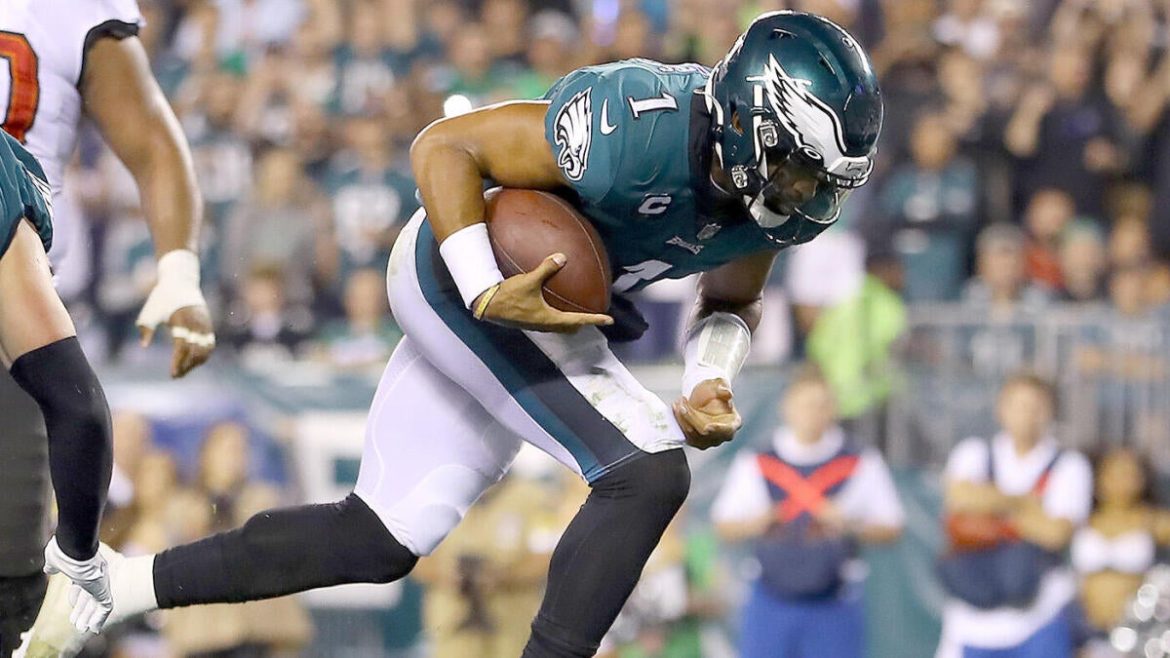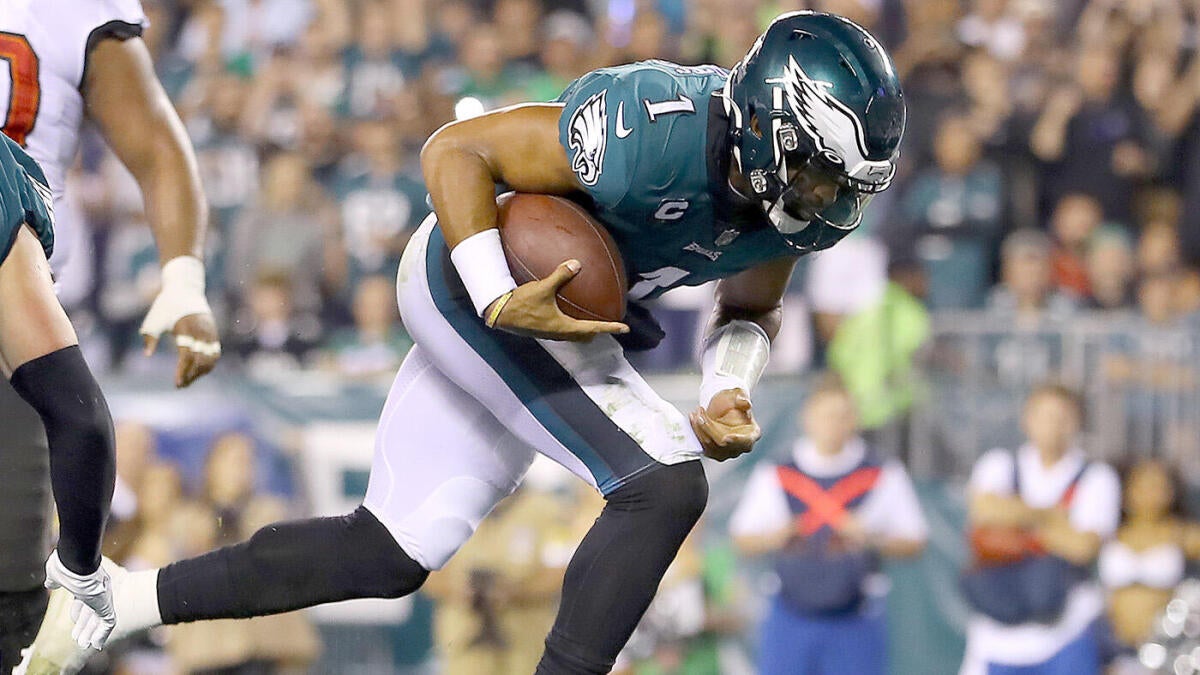The NFL’s recent decision to reject a proposal banning the controversial “tush push” play has reignited debate over its place in professional football. This play, famously and repeatedly utilized by the Philadelphia Eagles, involves teammates pushing the quarterback during a quarterback sneak to gain short yardage. Despite concerns voiced by some teams regarding fairness and player safety, NFL owners voted against outlawing the maneuver, allowing the “tush push” to remain a legal tactic for the 2025 season and beyond.
Understanding the Tush Push: What Is It and Why Does It Matter?
The “tush push,” also known as the “brotherly shove,” is a quarterback sneak variation where teammates literally shove the ball carrier from behind to help him cross the line of scrimmage. It gained national prominence through the Philadelphia Eagles, who have wielded it with uncanny effectiveness. The play’s efficiency in short-yardage situations, especially on critical downs, has frustrated many opponents and prompted them to question its legitimacy.
Beyond the tactical innovation, the “tush push” represents a blending of physical teamwork and calculated risk. It has been compared to a rugby scrum maneuver, emphasizing collective drive rather than individual athleticism. Critics argue it undermines the nuance of traditional football plays and gives an unfair advantage to teams with particularly strong front lines and disciplined execution.
The Ban Proposal: Origins, Motivations, and Opposition
The push to eliminate the “tush push” originated primarily with teams like the Green Bay Packers, who perceived it as a tactic that disproportionately benefits the Eagles. They proposed a rule change to prohibit forward pushes on the runner, framing the issue partly around player safety and partly as an unfair competitive advantage.
Supporters of the ban cited vague safety concerns, referencing the increased risk of injury from players pushing a collapsing pile of bodies or creating unpredictable collisions. However, some insiders and analysts suggested safety was less the focus than a desire to neutralize a dominant strategic play exploited successfully by one team.
Opposition to the ban was spearheaded by the Eagles themselves and several other clubs who argued the play represents legitimate football. Eagles coach Nick Sirianni dismissed claims that the play leads to “automatic yardage,” noting that success with it comes from disciplined practice and strength. Eagles center Jason Kelce expressed indifference toward banning the play, confident that his team excelled at quarterback sneaks even before popularizing this specific technique.
The Vote and Its Outcome: Narrow Margin and Divided Opinions
When NFL owners convened to decide the fate of the “tush push,” the ban proposal failed to garner the required majority. Official reports cite a 22-10 vote in favor of banning, which was two votes shy of passing. This close margin illustrates a league divided in perspective, with nearly half the owners opposing a rule change that would alter short-yardage game dynamics.
Most teams not aligned with the Eagles or Packers seemed wary of piecemeal alterations that mathematically impact game flow or introduce subjective enforcement challenges. Some owners believed it was premature to ban the play without comprehensive data on safety risks or competitive integrity concerns.
Interestingly, the vote’s failure did not signal the end of discussions. Some league sources anticipate that ongoing conversations around safety, fairness, and game integrity may lead to future rule considerations, suggesting the “tush push” controversy will persist as long as it remains effective.
Why the Eagles’ “Tush Push” Resonates So Powerfully
The Eagles’ deployment of the “tush push” exemplifies strength-based football, capitalizing on a powerful offensive line coordinated around quarterback Jalen Hurts’ running ability. Their trademark usage has turned a relatively simple maneuver into a feared short-yardage weapon that can tilt game momentum.
The play’s success also stems from team chemistry and repetitive practice. It’s not just brute force; precise timing and trust among players dictate perfect execution. This technical proficiency makes it especially difficult for opponents to counter consistently without matching similar physicality or defensive schemes.
This elevated profile has led rival teams either to seek ways to replicate the play or to campaign for its elimination. The Eagles have embraced the attention, defiantly stating that if rivals want to ban it, the real question is whether they can stop it on the field.
Arguments For and Against Banning the Tush Push
Arguments For the Ban
– Player Safety Concerns: Though data is limited, pushing players forward while packed in tight quarters could increase risks of injury, falls, or collisions.
– Competitive Fairness: The play creates what some see as an unfair advantage, especially for teams with exceptionally strong, cohesive lines.
– Game Integrity: Critics liken the maneuver to rugby scrums, suggesting it departs from typical football plays and erodes traditional play-calling dynamics.
Arguments Against the Ban
– Legitimate Tactic: Advocates maintain it is a legal, skillful play that rewards practice, strength, and teamwork.
– Lack of Clear Safety Evidence: Without concrete injury data linked specifically to the play, banning may be premature.
– Impact on Strategy: Eliminating effective plays alters the natural evolution of football strategies and diminishes diversity in gameplay.
The Broader Impact: What This Means for the NFL Moving Forward
Retaining the “tush push” keeps alive an intriguing strategic element that highlights power running and teamwork. It challenges other teams to adapt, whether by developing stronger defensive fronts or innovating countermeasures.
The controversy also reflects the NFL’s balancing act—maintaining tradition while evolving to improve safety and fairness. The “tush push” may be emblematic of how technical minor exploits can catch the league in a bind: evolve rules too quickly, and authenticity suffers; move too slowly, and competitive imbalances or safety concerns fester.
As debates continue, the league’s willingness to examine frequently-used plays through rule proposals suggests receptivity to change, but with careful deliberation. The close vote hints at future scrutiny on plays that impact player safety or competitive fairness, even amid passionate disagreements.
Conclusion: The Tush Push Controversy Is Far From Over
The NFL’s decision not to ban the “tush push” for the upcoming season underscores the complexity of rulemaking in a high-stakes professional sport. This play is more than a tactic; it symbolizes innovation, controversy, and the intricate dynamics between competition and regulation. Numbers alone could not tip the scales, leaving the “tush push” intact but contentious.
For fans and teams alike, the saga emphasizes adaptability on the field and negotiation off it. Whether the “tush push” evolves, lives on unchanged, or eventually becomes outlawed, its story continues to spark conversation about the very nature of football’s essence—strength, strategy, and teamwork fused on the gridiron stage.





